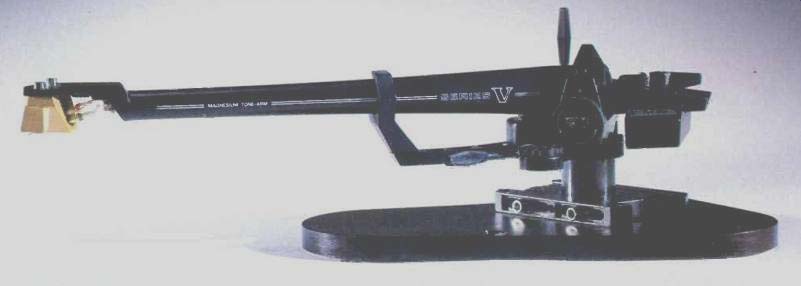
Manufacturer's Specifications
Tonearm Type: Tapered magnesium tube with fixed headshell and dynamic balance.
Pivot-to-Spindle Distance: 215.35 mm (8 1/2 in.).
Offset Angle: 23°, 38'.
Overhang: 17.8 mm, adjustable ±9 mm by rack-and-pinion shift.
Tracking Error: 0.012°/mm max.; 0° at 66.04 mm and 120.9 mm from record center.
Vertical Tracking Force: 0 to 3 grams, adjustable by 0.1-gram calibrated knob.
Wiring: Headshell, silver litz, user-replaceable; internal, silver litz; external, monocrystal silver with standard five-pin plug.
Effective Mass: 10 to 11 grams, without cartridge.
Weight: 720 grams (1 lb., 9 oz.).
Price: $1,750.
For literature, circle No. 90 Cartridge Type: High-output moving-coil.
Stylus: Miniature-shaft van den Hul Type I.
Cantilever: Titanium, diamond-coated.
Output: 1.8 mV into 47 kilohms for 5 cm/S at 1 kHz.
Internal Coil Resistance: 105 ohms.
Recommended Tracking Force: 2 grams.
Frequency Response: 10 Hz to 60 kHz.
Separation: 30 dB at 1 kHz.
Compliance: 15 x 10^-6 cm/dyne.
Weight: 7.2 grams.
Price: $1,200.
Company Address: c/o Sumiko, P.O. Box 5046, Berkeley, Cal. 94705.
If you are at all interested in, or even curious about, the trend toward perfection of analog record playback equipment, you will be as interested in reading this report as I was in preparing it. I must admit that I consider the SME V tonearm to be a tour de force in design and manufacture.
"Well!" you are saying, "Now I don't need to skip to the end of the report and see what Ed Long really thinks about the SME V tonearm." That's true enough, but if you care to know why the SME V works as well as it does and, paradoxically, why you initially might not like the sound which it helps to produce, read on. Besides, the Talisman Virtuoso cartridge is also a part of this report and is interesting enough on its own to be worth reading about.
It was May 1981 when I reported on the SME 3009 III tonearm in conjunction with the Shure V15 Type IV cartridge. A month later, in June 1981, I reported on the Shure MV3OHE cartridge wand, which was designed specifically as a plug-in for the SME III. (The SME III was the model previous to the SME V tonearm; there was no SME IV.) If you are interested in comparing the versions III and V to see the change in direction of design exhibited by the SME V, you might want to look at these 1981 reports. A partial comparison between the two is presented here as a "Measured Data" Table.
One thing that has always impressed me, over the years, is the very personal approach exhibited toward the public by SME, a small British company. I think it is due, to a great extent, to SME's Managing Director, Alastair Robertson Aikman, who is a very personable fellow. He and Reg Eidy, SME's Chief Engineer, have been working on the SME V tonearm for the past five years. At this time, SME is represented in the U.S. by Sumiko of Berkeley, Cal. The Technical Director of Sumiko, David Fletcher, also very personable though something of an iconoclast (Indeed!-Ed.), seems to have had some input into the design considerations of the SME V. David was the designer of Sumiko's MDC-800 tonearm and is the person most responsible for the technical aspects of the Talisman moving-coil phono cartridges.
Since the latest model of the Talisman line, the Virtuoso (or V, for short), seemed like an excellent match for the SME V tonearm, I used it for the technical and listening tests.
The Talisman V is a new moving-coil design, and while it shares the Direct Field Focus configuration of the Models A, B and S, it is quite different from them in major respects. The Talisman S cartridge was reported on in the September 1983 issue of Audio, and you might want to refer to it to see the direction in which the Talisman line of cartridges is heading.
MEASURED DATA
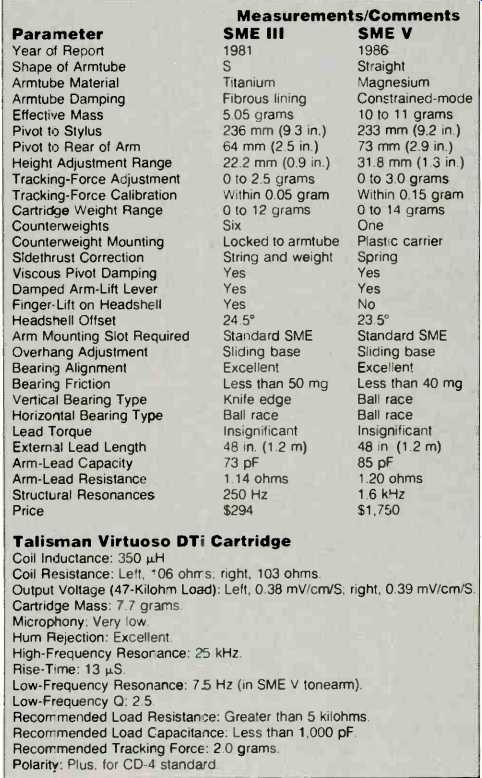
Talisman Virtuoso DTi Cartridge
Coil Inductance: 350 µH
Coil Resistance: Left, 106 ohms; right, 103 ohms.
Output Voltage (47-Kilohm Load): Left, 0.38 mV/cm/S; right, 0.39 mV/cm/S.
Cartridge Mass: 7.7 grams.
Microphony: Very low.
Hum Rejection: Excellent.
High-Frequency Resonance: 25 kHz.
Rise-Time: 13 µS.
Low-Frequency Resonance: 75 Hz (in SME V tonearm).
Low-Frequency Q: 2.5.
Recommended Load Resistance: Greater than 5 kilohms.
Recommended Load Capacitance: Less than 1,000 pF.
Recommended Tracking Force: 2.0 grams.
Polarity: Plus, for CD-4 standard.
First Impressions
As can be seen from its photograph, the SME V tonearm is very impressive. It reminds me of one of the scale-model starships which have appeared in recent space-epic movies. The fact that the initials SME stand for Scale Model Engineering is purely coincidental, I'm sure. The construction and finish are of the highest quality and make it obvious that one should expect the highest level of performance.
The fit of the bearings is excellent, and no play was evident when I tried my push-pull test by gripping the armtube in one hand and the arm pillar in the other. Tapping the arm tube produced a very dull sound, indicating that what resonances might be present were well damped and should not color the sound significantly. The SME V tonearm is a dynamic-balance design. This means that after a counter weight is adjusted to balance the tonearm for the cartridge being used, the vertical tracking force and sidethrust compensation force are set by coiled springs, rather than shifting weights, thus keeping the arm in balance even when it is not perfectly level. Two knobs with 0.1-gram calibrations set the tracking force and sidethrust compensation.
There is no finger lift on the headshell. The tonearm is raised or lowered by a viscous-damped mechanism mounted near the main pillar and operated by a control lever.
The Talisman cartridge has one very distinctive feature which I wish were available on all phono cartridges, threaded mounting holes in the cartridge body. That means no separate nuts or washers must be held in place while the screws are lined up, started, and tightened, all while holding the cartridge in place. I would like to publicly thank St. Anthony for the many small hardware pieces which he has found for me, over the years, after they had seemingly fallen into some black hole during the intricate cartridge-mounting process.
Features
The armtube of the SME V tonearm is pressure die-cast of magnesium, which has a very good stiffness-to-weight ratio and good inherent damping. The hollow arm tube tapers in both thickness and cross-section along its length, and it extends from the headshell to the counterweight, passing through the pivot bearings without any joints or breaks. The internal damping of the armtube is accomplished by using a technique called constrained-mode damping (more on that later), which has proven very effective in reducing the type of mechanical-energy buildup most prevalent in thin-walled structures.
There are two hobs with steel inserts in the headshell for mounting the phono cartridge. Since there are no slots in the headshell, the necessary stylus overhang must be adjusted by moving the whole tonearm in relationship to the turntable's center spindle. This stylus overhang is required for all pivoted tonearms to correct for tracking error across the record surface. The lack of slots does not allow the angle of the cartridge to be adjusted to correct for any misalignment of the stylus on the cantilever. With a "Line Contact" type of stylus, this can be a problem, because it means that the left and right groove walls will not be traced at precisely the same instant. This effect shows up in the phase-versus-frequency plot which I have been showing for a number of years. I am not certain how the interchannel time offset affects the total sound quality, but in the limited experimenting I have done, it seems to have an effect upon the precision of the sound image in the upper frequency range. In any case, the quest to eliminate any odd effects from the reproduced sound should make it a matter of some concern.
The counterweight system has a die-cast casing with weights inside. It is shaped so that it can be placed very close to the pivots, allowing the tonearm to maintain a very low effective mass. Cartridges weighing between 4 and 14 grams can be balanced by rotating a thumbwheel, which adjusts the position of the counterweight. After the cartridge is balanced, the counterweight can be locked in place by turning a lever. The tracking force can be set to as much as 3 grams by turning the calibrated knob.
The vertical tracking angle can be adjusted in one direction while playing a record, by turning the VTA screw, which raises the tonearm pivots. To lower the pivots, the main pillar must be pushed down again. Adjustment of the VTA is also helped by the two white lines which run the length of the armtube and by a special template. The 10-mm diameter horizontal and 17-mm diameter vertical bearings are captive in precision races, and located in the same plane as the record surface, to negate the effects of warp wow. The tonearm can be moved with respect to the center spindle by a rack-and-pinion system which uses a special horizontal tracking angle key. The HTA key allows the tonearm to be adjusted so that the stylus will overhang the center spindle by the correct amount. SME has used this technique before but never with such an elaborate and precise mechanism.
The tonearm damping system, which consists of a trough of viscous fluid and a paddle, is also a refinement of the previous system used on the SME III tonearm. The amount of damping in the horizontal plane is increased or de creased by lowering or raising the paddle with an adjustment screw. The four color-coded cartridge attachment leads can be changed; the ones supplied were by van den Hul. The internal armtube wiring and the external phono cables are also specially made for SME by van den Hul. The bottom of the arm pillar is fitted with a viscous-damped, right-angle plug which can be rotated almost a full 360°.
This allows the phono cables to exit the turntable base wherever it is most convenient and solves the problem of how to anchor them properly.
As a last note about this tonearm's features, I must compliment SME for the quality and comprehensiveness of the instruction manual. It is a gem.
The body of the Talisman V cartridge is machined from a solid piece of aluminum. As mentioned previously, the mounting holes are drilled and tapped right into the body. A high-coercivity neodymium-iron magnet is used in the Talisman's Direct Field Focus system to achieve a very high output voltage. In fact, the output of the Talisman V is about eight times that of the Talisman S, so it needs no step-up device. This means not only lower system cost but that the signal degradation inevitable with a step-up is eliminated.
The Talisman V can be operated directly into a 47-kilohm, magnetic phono-cartridge input. In fact, any load impedance above 5 kilohms is acceptable, and input capacitance also has negligible effect. The cantilever of the Talisman Virtuoso which I tested is titanium, with a diamond overlay (as denoted by its DTi designation), which gives it added stiffness. (A Talisman Virtuoso B, with boron cantilever, is also available, for $800.) The stylus is a van den Hul Type I design, precision-cut from a small cross-section diamond shaft. A damper having very low hysteresis is used in order to maintain good time and amplitude response for better spatial-information recovery.
Measurements and Listening Tests

Fig. 1--Frequency response and interchannel crosstalk of the SME arm and Talisman
cartridge using B & K 2010 test record.
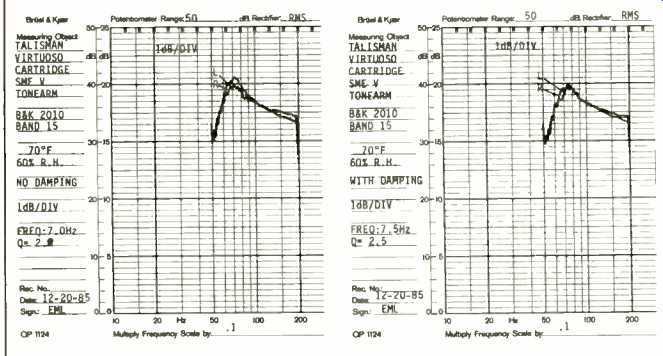
Fig. 2--Low-frequency arm/cartridge resonance is at 7.0 Hz and Q is 2.8 without
damping (left); resonance is at 7.5 Hz and Gl is 2.5 with damping (right).
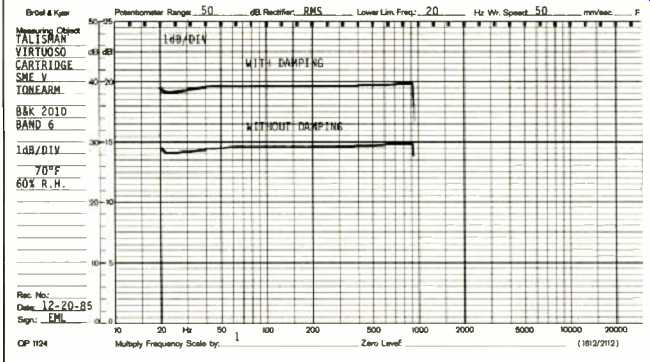
Fig. 3--Slow-sweep check (upper curve) and without (20 to 900 Hz) for tonearm
(lower curve), resonances, with damping.
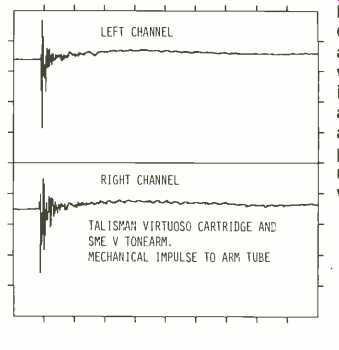
Fig. 4--Output of arm/cartridge when mechanical impulse was applied to armtube.
Total period of measurement was 20.47 mS.
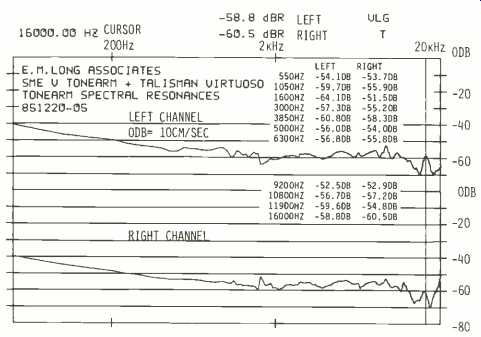
Fig. 5--Output (averaged) of arm/cartridge due to 16 mechanical impulses applied
to armtube. This is an excellent result, indicating good energy damping by
the tonearm.
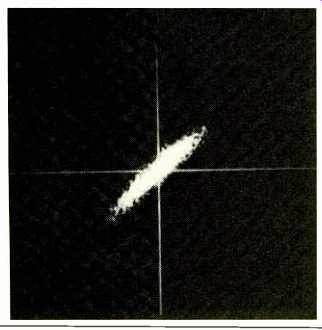
Fig. 6--Interchannel phase difference of arm/cartridge using pink noise from
B & K 2011, band 7.
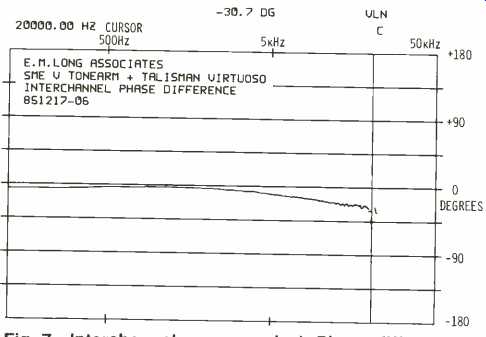
Fig. 7--Interchannel phase difference of arm/cartridge as a function of frequency
(B & K 2011, band 7, pink noise). Phase difference at 20 kHz (cursor position)
is 30.7°, equivalent to only 4.3 uS of interchannel delay.
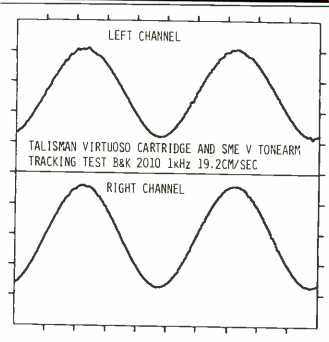
Fig. 8 Tracking of arm cartridge with a 1-kHz test tone from the B & K 2010
at 19.2 cm/S.
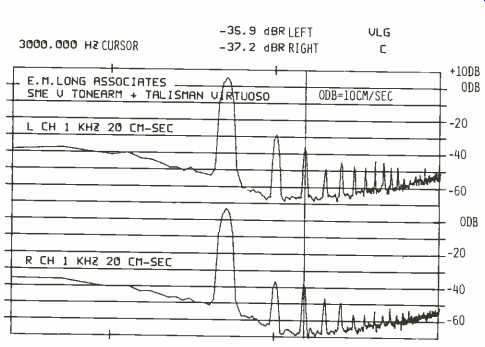
Fig. 9--Spectral analysis of the cartridge output when reproducing the test
signal of Fig. 8. The third harmonic (at the cursor position) is 1.6% in the
left channel, 1.4% in the right.
Figure 1 shows the amplitude versus frequency response and also the crosstalk versus frequency for the SME/Talisman combination; the results are very good. The response at 20 kHz is particularly interesting since it verifies comments by some members of the listening panel that the sound was very open and clear in the upper range. The high-frequency resonance at 25 kHz, due to the interaction of the compliance of the record groove with the effective mass of the stylus tip, is verified by the rise in the crosstalk.
The rise in the crosstalk at 60 Hz is an artifact of the B & K 2010 test record; the actual crosstalk for the SME/Talisman combination is much lower.
The low-frequency resonance, caused by the interaction of the tonearm's effective mass and the cartridge's compliance, is shown in Fig. 2, with and without the low-frequency damping system activated. The Q is very low for either condition, but it must be remembered that I have taken much care in centering the test record, which reduces the side-to-side swaying of the tonearm. The viscous damping system is most effective for this horizontal motion, so it would be even more useful under normal conditions, with the record less carefully centered, than would appear from Fig. 2. The panel's comments about the very tightly con trolled character and extension of the bass register were a bit difficult to sort out. Due to better damping of its low frequency resonance, the SME/Talisman combo had less bass output than the reference system's, though perhaps a bit more extended. This confused some panel members a bit. The reference system was preferred by some panel members when reproducing drums and double bass be cause, as they commented, "the bass sounds fuller." This is another paradox of the SME/Talisman performance, since careful listening to the sound of bass drum on orchestral recordings convinced me that it was more realistic.
The smooth curves of Fig. 3 indicate the control of mechanical resonances in the SME V tonearm. The viscous damping system does not have any visible effect upon the response, but there aren't any major uncontrolled vibrations which would show its effect anyway. This lack of substantial resonances, which might color the sound, can be verified easily by tapping the armtube with a pen or a small screw driver. I am convinced that it was this very lack of coloration which caused some members of the listening panel to comment that the SME/Talisman combination was more reticent in its quality than the reference system. This is what I meant earlier, when I said that you might not like the sound which the SME V tonearm helps to produce. The lack of coloration in the SME can cause other tonearms to be preferred, at least in short-term listening. I have seen this before, especially in the case of a tonearm which caused a very euphonic coloration due to its very loose pivots! The results of applying a series of mechanical impulses to the armtube are presented in Figs. 4 and 5, which show the amplitude versus time and the frequency spectrum of the energy of the SME V/Talisman Virtuoso combination. These results indicate the excellent damping of energy by the SME's tapered magnesium armtube and the internal damping system. As I mentioned before, the technique used is called constrained-mode damping. This method places the actual damping material in direct contact with the surface from which the energy is to be removed. The damping material is then covered with, and its movement constrained by, a thin layer of stiff material. The energy is dissipated in the form of heat as it tries to move between the surface to be damped and the constraining layer.
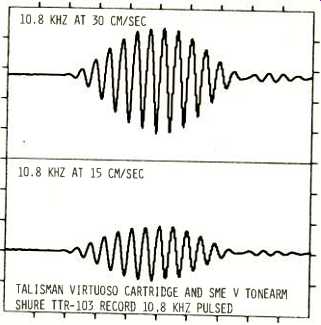
Fig. 10--Output with 30- and 15-cm/S, 10.8-kHz pulse test, Shure TTR-103 test
record.
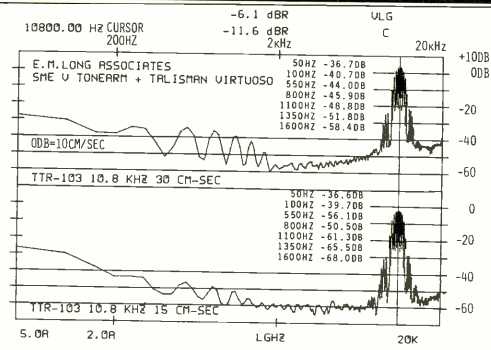
Fig. 11--Spectral analysis of distortion products from signals shown in Fig.
10. Distortion at 50 Hz is 1.5% for 30-cm/S modulation.
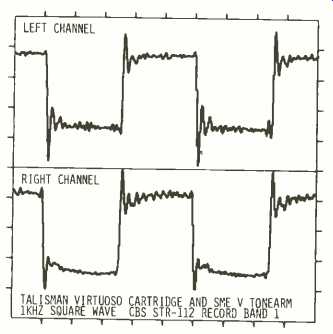
Fig. 12--Cartridge output from 1-kHz square wave, CBS STR-112 test record.
Figure 6 shows the interchannel phase difference, displayed on the screen of a Nicolet Explorer III digital storage oscilloscope. Figure 7 shows the phase versus frequency for 64 samples of the same pink noise signal used for Fig. 6.
This is a phase transfer function, obtained using a Nicolet 660A-2D Fast Fourier Transform analyzer, and represents the difference in phase between the left and right channels.
The very slight phase difference between the channels indicates that the ability to present a very stable stereo image is excellent. The comments of the listening panel confirmed this by indicating that both the SME/Talisman and the reference system presented superb stereo images.
The SME/Talisman combination has excellent tracking ability, as shown by Figs. 8 and 9. Figure 8 shows amplitude versus time of the left- and right-channel outputs while reproducing the second-highest-level 1-kHz band on the B & K 2010 test record. The waveform has only a tiny amount of jitter. The frequency spectrum of this waveform is shown in Fig. 9, and the distortion is very low for this high a level. The eighth and ninth harmonics show an increase; this may account for some of the brightness which was heard when reproducing a trumpet.
The ability of the SME/Talisman combination to reproduce high frequencies with a seeming effortlessness is verified by the information shown in Figs. 10 and 11. The output of the left channel, while reproducing a 10.8-kHz tone burst at 30 and 15 cm/S, is shown in Fig. 10; its symmetry and lack of compression, even at the higher level, is very good. The aspect of performance most often cited as an area of superiority over the reference system was the way that the SME/Talisman combination reproduced the midrange and high frequencies. The words "transparency" and "clarity" were often used by members of the listening panel to describe the sound.
The responses to 1-kHz square waves, Fig. 12, are excel lent and indicate that, while time delay of the high frequencies with respect to low frequencies is present, it is very slight. The relationship of fundamentals and overtones will therefore be correct over a wide range of frequencies.
Conclusions
Both the SME V tonearm and the Talisman Virtuoso cartridge incorporate some very useful and innovative features. Most notable about the SME are its tapered, one-piece magnesium armtube and integral headshell; special van den Hul internal wiring, and the constrained-mode internal damping in the armtube. The Talisman's most remarkable features are, I feel, its solid aluminum body, with integral drilled and tapped mounting holes, and the diamond-coated titanium cantilever. Together, the SME V tonearm and the Talisman Virtuoso cartridge make an excellent combination; anyone who is looking for the finest reproduction of analog discs should try to audition it. Even if you can't afford to buy these components right now, you should listen to them to hear just how good records can sound.
--Edward M. Long
( Audio magazine, Jun. 1986)
Also see:
SOTA Star Sapphire Turntable (Jun. 1986)
SOTA Cosmos Turntable / SME 309 Arm & Signet OC9 Cartridge (Sept. 1990)
Revolver Turntable, Standard Arm, and Bullet Cartridge (Apr. 1989)
Thorens TD 320 Turntable and TP 16 MK III Tonearm (Mar. 1987)
= = = =